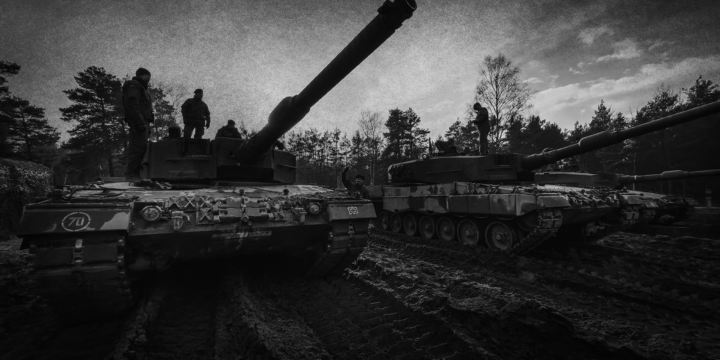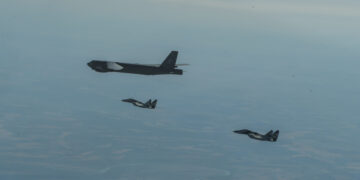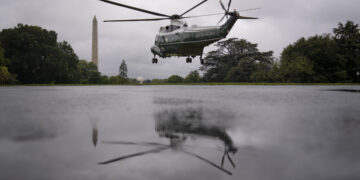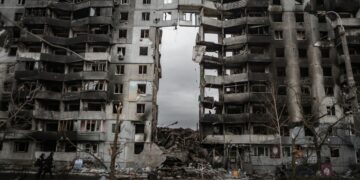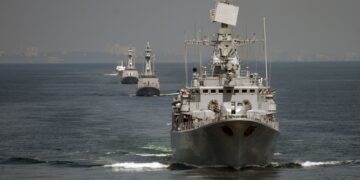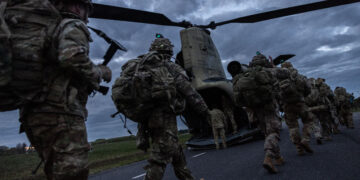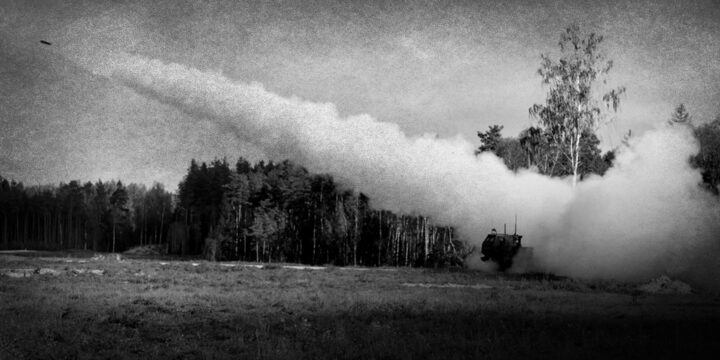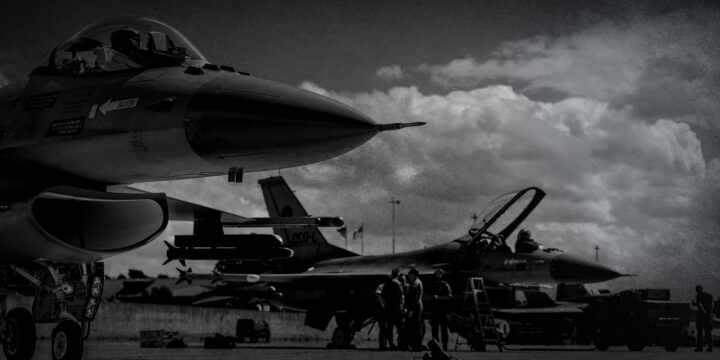June 17, 2022
Ukraine-Russia war military analysis
By Daniel Davis
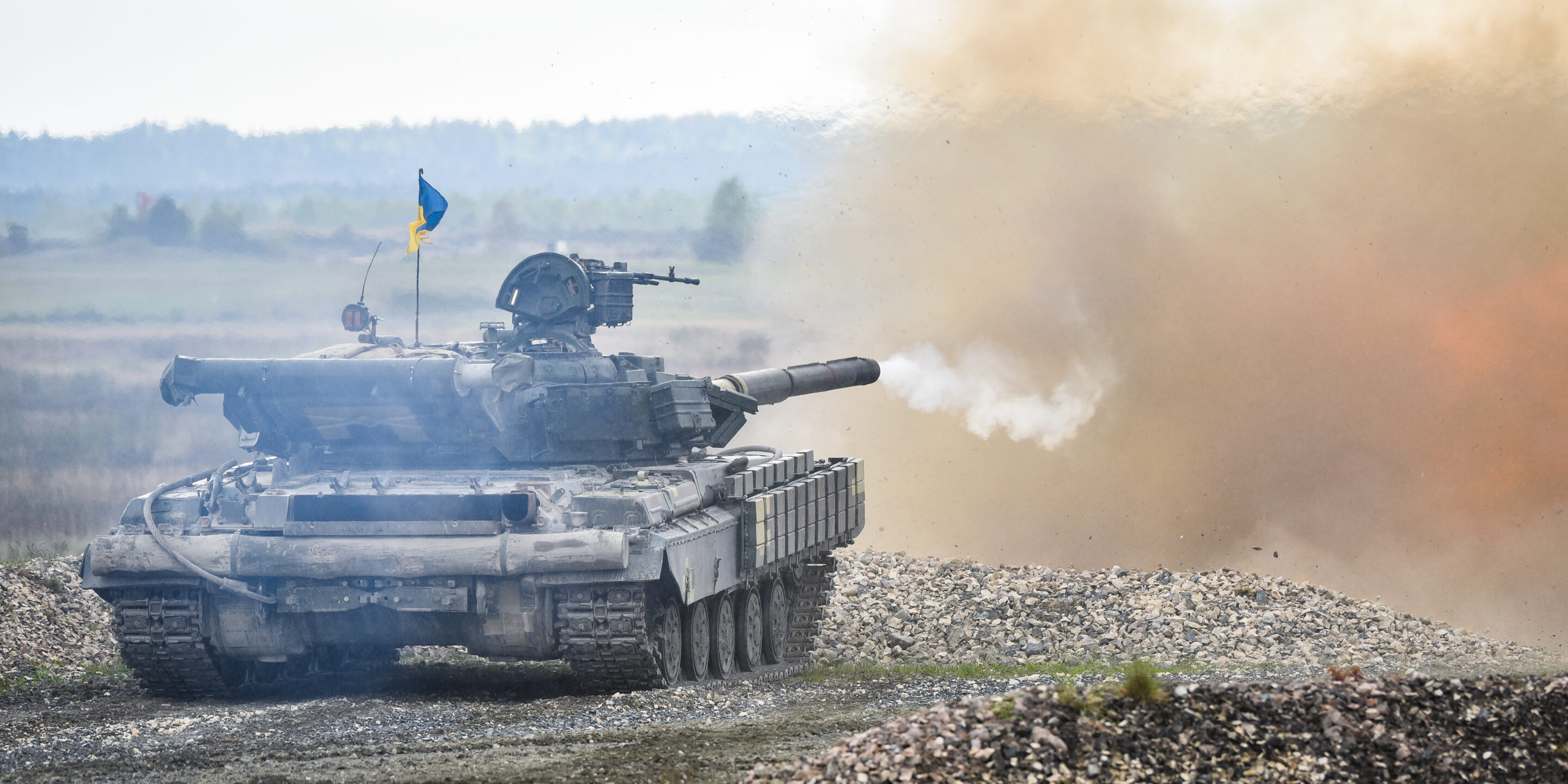
Key points
- In the opening phase of its invasion of Ukraine, Russian armed forces made major errors in both the operational and tactical realm, costing the lives of thousands of its troops. Ukraine, by contrast, performed well above expectations and brought the Russian offensive against Kyiv and Kharkiv to a halt.
- After undeniable failures, Russia redeployed a major portion of its combat power, away from Kyiv and Kharkiv, to reinforce its attack on Donbas. This shift plays to Russia’s strengths and exposes Ukrainian Armed Forces (UAF) to greater risk.
- Russian forces have made slow but methodical progress on the northern shoulder of the Battle of Donbas, putting 10,000 UAF at risk of encirclement in the Sievierodonetsk pocket, like the loss they suffered at Mariupol.
- Ukrainian President Volodymyr Zelensky declared Ukraine will not stop fighting until all Ukrainian territory has been liberated.1At a London think tank, Ukrainian President Volodymyr Zelensky reportedly said that, at a minimum, Ukraine would keep fighting until Russian forces pull back to their pre-invasion position. See “Ukraine War: Russia Must Withdraw to Pre-Invasion Position for a Deal—Zelensky,” BBC News, May 7, 2022, https://www.bbc.com/news/world-europe-61359228; Speaking to the World Economic Forum in Davos, Switzerland, former Secretary of State Henry Kissinger suggested Ukraine negotiate “a return to the status quo ante,” or pre-war borders, and said, “Pursuing the war beyond that point would not be about the freedom of Ukraine, but a new war against Russia itself.” See Dan Bilefsky, “Kissinger Suggests That Ukraine Give up Territory to Russia, Drawing a Backlash.” New York Times, May 24, 2022, https://www.nytimes.com/2022/05/25/world/europe/henry-kissinger-ukraine-russia-davos.html; In response, President Zelensky stated, “You get the impression that Mr. Kissinger doesn’t have 2022 on his calendar, but 1938, and that he thinks he is talking to an audience not in Davos but in Munich back then,” which suggests a settlement for pre-invasion borders would be tantamount to appeasement and therefore unacceptable to Ukraine. See “Ukraine Savages Idea of Concessions to End War, Evokes Appeasement of Nazis,” Reuters, May 25, 2022, https://www.reuters.com/world/europe/russian-official-calls-italian-peace-plan-ukraine-fantasy-2022-05-25/. To have a chance of accomplishing that objective, Ukraine would likely need to recruit and train an additional 100,000 troops, at least, a task that would take 12–18 months, and equip its forces with a comprehensive set of modern, heavy weaponry, provided by the West, numbering in the thousands of armored vehicles and associated weaponry.
- There is great risk for Ukraine in undertaking such an attempt. It is unclear whether NATO will provide sufficient modern weapons or whether Ukraine can successfully hold off Russia while also recruiting and training so many more troops.
- If Russia defeats Ukraine in the Battle of Donbas, Kyiv will face a difficult choice: (1) to dig in and continue fighting, even though much of its most effective forces will have been captured or killed, and risk steadily losing more territory or (2) negotiating with Russia to trade territory lost since 2014 to stanch further losses of Ukrainian lives and land.
Assessing the military balance between Ukraine and Russia
Over the first 100 days of the war, the United States has provided a substantial volume of heavy weapons to Ukraine to help it fight off Russia’s unjustified invasion, including four M142 High Mobility Artillery Rocket System (HIMARS).2C. Todd Lopez, “Advanced Rocket Launcher System Heads to Ukraine,” DoD News, Department of Defense, June 1, 2022, https://www.defense.gov/News/News-Stories/Article/Article/3050010/advanced-rocket-launcher-system-heads-to-ukraine/; Department of Defense, “Fact Sheet on U.S. Security Assistance to Ukraine,” June 1, 2022, https://www.defense.gov/News/Releases/Release/Article/3049483/fact-sheet-on-us-security-assistance-to-ukraine/. The chances that the HIMARS, or any other weapons currently under consideration for delivery to Kyiv, tilt the tactical balance of power in Kyiv’s direction, however, are low.
In the early stages of the war—especially after Russian armor withdrew from Kyiv and Kharkiv—many in the West were optimistic about the performance of the Ukrainian Armed Forces (UAF) and dismissed the Russian army as incompetent and destined to fail. Secretary of Defense Lloyd Austin went so far as to say, “We believe that [Ukraine] can win if they have the right equipment, the right support.”3William Mauldin, “Ukraine Can Win with Right Equipment, Says Austin,” Wall Street Journal, April 25, 2022, https://www.wsj.com/livecoverage/russia-ukraine-latest-news-2022-04-25/card/ukraine-can-win-with-right-equipment-says-austin-WatIo2QRt5wSI1ZvrAAr.
But since Russian troops began the Battle of Donbas in late April, the tide has not shifted to Ukraine. Despite billions of dollars in U.S. military support to Ukraine since February, including 6,500 javelin anti-tank systems and more than a hundred 155mm Howitzers, Russia continues to make methodical, if slow, progress against Ukrainian forces there.4Department of State, “U.S. Security Cooperation with Ukraine,” June 1, 2022, https://www.state.gov/u-s-security-cooperation-with-ukraine/. Given the current battlefield dynamics and the Russian army’s adjustments, it appears increasingly likely Russia will win the Battle of Donbas and deal a major blow to UAF.
Opening round losses for Russia
In the first month of the war, Russia committed numerous tactical mistakes. Allocating only 190,000 troops to such a massive operation, and splitting them into four axes, dissipated its strength and violated a cardinal rule of war: massing effects. By spreading its troops thin throughout the second-largest country in Europe, Russia ensured it would not have enough troops to win the key battles in Kyiv, Kharkiv, and the Donbas. Additionally, Russian troops at the battalion-and-below level were shockingly unprepared in even basic tactics, such as when a tank battalion allowed itself to fall into Ukrainian artillery fire in a constricted city street north of Kyiv in early March.5“Ukrainian Artillery Fires on Tanks Outside Kyiv,” Yahoo video, 2:15, March 10, 2020, https://www.yahoo.com/video/ukrainian-artillery-fires-tanks-outside-092917498.html. Through May, this and other failures resulted in an estimated 35,000 total Russian casualties, and 741 tanks, 1,300 other armored vehicles, and 27 fixed-wing aircraft lost.6Philip Wasielewski, “The Evolving Political-Military Aims in the War in Ukraine After 100 Days,” Foreign Policy Research Institute, June 9, 2022, https://www.fpri.org/article/2022/06/the-evolving-political-military-aims-in-the-war-in-ukraine-after-100-days/.
Opening successes by Ukraine
Urban warfare—the most ferocious, bloody type of fighting in the modern era, chewing up attackers at a high rate and inflicting major harm on infrastructure and the population—favors the defender. Defending forces can hide in buildings, suddenly spring on the attackers’ vehicles from near point-blank range, and engage from upper floors of high-rise buildings (where turrets often can’t elevate high enough to return fire). Visibility constrained, the attackers’ armor can only fire as far as the gunners can see down a street. UAF used these advantages to maximum benefit—Ukrainian anti-tank missiles were particularly effective in destroying Russian armor and hindering Russian supply lines.
What shifted when the fight concentrated in Donbas
While mechanized forces are at a disadvantage in urban warfare, they enjoy many advantages in open countryside. The conditions in the Donbas are very different and do not favor troops with limited mobility, like the Ukrainian field forces. The Donbas is largely open country with some rolling hills; there are far fewer places to hide in the fields, making it nearly impossible for the defender to sneak up on attacking tanks. More important, Russia adjusted after astounding failures in the war’s opening stages, leveraging its massive advantage in firepower, battering Ukrainian positions from greater distances and taking fewer risks with its troops in direct assaults.
Shrinking battlespace for Ukraine in Donbas’ northern shoulder
Since the Battle of Donbas started, Russia has relentlessly attacked Ukrainian positions using a combination of heavy artillery, rocket fire, and air strikes. Ukrainian troops held an initial advantage, as they had spent nearly eight years preparing hardened defenses along the old line-of-contact separating Ukraine from Russian-backed separatists in Donbas. But even the best defenses can’t endure nonstop bombardment, and those positions have started to give way. UAF occupy fewer prepared positions the farther the fighting moves from the line-of-contact, increasing their vulnerability to bombing. As a result, Russian troops have made methodical progress.
Current state of Donbas
As of June 1, Russian troops continue closing in on the last Ukrainian-held city in Luhansk province, Sievierodonetsk, having advanced to the city center. In the past five or six weeks, Russia captured Izyum, Poposnya, Lyman, and other smaller towns, nearly severing the last avenue to supply to Sievierodonetsk. Ukrainian leaders likely have days to decide whether to evacuate the roughly 10,000 UAF in this pocket or risk having them cut off and methodically killed or captured, as happened at Mariupol. If this northern shoulder of Donbas falls to Russia, the center and southern shoulders—along with an estimated 20,000 to 30,000 UAF—will be at increased risk of defeat.
What it will take to stop the Russian advance
The most immediate need for Ukraine to repel Russian advances in Donbas is to form mobile counterattack forces in depth to prevent any sizable Russian penetrations. The greatest danger to the UAF defenses would be if a Russian armored column broke through Ukrainian lines and were free to attack UAF positions from behind their fortifications. Kyiv must therefore create mobile counterattack forces to put in depth of its positions to blunt any Russian penetration.
These forces could be formed by repositioning select units from less contested battlefields, such as those near Kharkiv or Kherson. Withdrawing some mechanized forces from those two fronts would require Kyiv accepting some risk, but a Russian penetration in the Donbas represents a greater threat to the integrity of Ukraine’s overall defense than what might happen in either Kharkiv or Kherson. Kyiv cannot afford a catastrophic loss in the Donbas and should therefore take actions to mitigate that threat.
Building fallback lines of defense
If Ukraine is ever going to form an offensive force of sufficient strength to recapture Russian-held territory, it will need a year or more to recruit, equip, and train that force. Based on the current situation in the Battle of Donbas, UAF won’t be able to hold the line that long. To mitigate this risk, the UAF should form fallback lines of defense. If, or when, holding Donbas becomes untenable, it can occupy already-prepared defensive lines. There are numerous areas west of Donbas that offer UAF advantageous geography from which to build new defensive lines. But if it waits until it is driven out of Donbas, it will suffer greater casualties, weakening its forces, and any new lines will be less effective.
Building an offensive capacity
For a viable chance to eventually drive Russia out of Ukraine, Kyiv must build an estimated 100,000-man force. Such an effort demands time and resources—both of which are scarce—to meet recruitment, equipment, and training requirements. Even if Ukraine successfully builds this capacity, a major task, it is not clear it would succeed. Before any Ukrainian soldiers began training, the West would have to agree to send Ukraine an extensive equipment set, including thousands of armored vehicles (tanks, artillery, infantry carriers, command vehicles, etc.), air defense systems, attack aviation, and hundreds of utility trucks of all types to supply and sustain the force.
Considerations for employment
Simply assembling that equipment set would be a gargantuan task, one without modern precedent, and would need to be completed at the earliest possible moment. Each day of delay in producing the necessary gear increases the chance Russian forces will defeat Ukrainian military forces.
Even if Ukraine could muster and train 100,000 troops, and assuming a major equipment set could be produced, there is still no guarantee UAF would succeed in expelling Russian forces. Gen. Douglas MacArthur once said that in “no other profession are the penalties for employing untrained personnel so appalling or so irrevocable as in the military.”7Jim Greer, “Training: The Foundation for Success in Combat,” Heritage Foundation, October 4, 2018, https://www.heritage.org/military-strength-topical-essays/2019-essays/training-the-foundation-success-combat. The author’s 20 years of military experience, including 4 combat deployments and experience training foreign militaries, strongly reinforce the truth of Gen. MacArthur’s argument and underlie the judgement about a year being needed to train a 100,000-man force.
Russia, for instance, invaded with around 190,000 troops and 120 battalion tactical groups (BTGs), yet still found it hard to make even incremental progress. Asking the Ukrainian authorities to form a new 100,000-man force and quickly launch an effective attack against the Russians is a task of immense difficulty.
Ramifications and risks of the attempt
Rapidly building a force capable of expelling Russian forces from Ukraine would be all the more complicated for at least two reasons: (1) If it appeared UAF were preparing to launch a viable offensive against Russian positions in Ukraine, Moscow would order its troops to begin, probably months in advance, to build formidable defensive works of their own throughout their battlespace (there are already reports of Russian forces digging defensive positions in the Kherson region). (2) In the time Ukraine had to build a new offensive force, Russia could build additional combat formations of their own. Ukraine would not only have to increase the capacity of its armed forces, but also grow and improve significantly faster than Russia could. This is difficult to imagine, though not impossible.
If Ukraine is eventually successful in forming this force and expelling Russia, Ukrainian President Volodymyr Zelensky would be a hero to his people. The biggest risk, however, is even if the force came together in an ideal timeframe, Ukrainian troops still might not succeed. The Russian side might defeat this offensive force and win an outright victory in the war. Successful or not, the effort would increase the odds additional, major portions of Ukraine would be destroyed, millions more would be driven from their homes, and likely hundreds of thousands more would be killed and wounded. It would be a very high price to pay for a victory, even if it were likely, which it is not.
Alternative
Of course, it is up to Ukraine and Russia to find a way to end the war, but this analysis has inescapable conclusions. Given the herculean task required of the Ukrainian military leadership in forming an offensive force of sufficient strength to win the war militarily—and the risk of catastrophic loss if the effort fails—it would be prudent to consider alternative ways of ending the war.
The conventional wisdom states that a diplomatic settlement is impossible in part because Russia will not negotiate in good faith. Yet both Kyiv and Moscow have an interest in solving the war diplomatically, and a lack of tactical success on either side could reanimate talks to end the conflict. Though right now it is anathema to any Ukrainian leader to trade territorial concessions for peace, it may be the wisest course of action at this point in the war: it would limit civilian deaths and casualties, damage and destruction of its cities, and further loss of territory.
In the end, negotiating a settlement might be the best available outcome for the Ukrainian people. The best-case scenario in which Ukraine eventually wins a total victory might never come, and an attempt could cost the country a great deal. Only the people of Ukraine and their leaders in Kyiv can make that call. However, U.S. interests are not identical to Ukraine’s, and U.S. policies should prioritize aiding Ukraine in its defense while avoiding escalation and expansion of the war.
Endnotes
- 1At a London think tank, Ukrainian President Volodymyr Zelensky reportedly said that, at a minimum, Ukraine would keep fighting until Russian forces pull back to their pre-invasion position. See “Ukraine War: Russia Must Withdraw to Pre-Invasion Position for a Deal—Zelensky,” BBC News, May 7, 2022, https://www.bbc.com/news/world-europe-61359228; Speaking to the World Economic Forum in Davos, Switzerland, former Secretary of State Henry Kissinger suggested Ukraine negotiate “a return to the status quo ante,” or pre-war borders, and said, “Pursuing the war beyond that point would not be about the freedom of Ukraine, but a new war against Russia itself.” See Dan Bilefsky, “Kissinger Suggests That Ukraine Give up Territory to Russia, Drawing a Backlash.” New York Times, May 24, 2022, https://www.nytimes.com/2022/05/25/world/europe/henry-kissinger-ukraine-russia-davos.html; In response, President Zelensky stated, “You get the impression that Mr. Kissinger doesn’t have 2022 on his calendar, but 1938, and that he thinks he is talking to an audience not in Davos but in Munich back then,” which suggests a settlement for pre-invasion borders would be tantamount to appeasement and therefore unacceptable to Ukraine. See “Ukraine Savages Idea of Concessions to End War, Evokes Appeasement of Nazis,” Reuters, May 25, 2022, https://www.reuters.com/world/europe/russian-official-calls-italian-peace-plan-ukraine-fantasy-2022-05-25/.
- 2C. Todd Lopez, “Advanced Rocket Launcher System Heads to Ukraine,” DoD News, Department of Defense, June 1, 2022, https://www.defense.gov/News/News-Stories/Article/Article/3050010/advanced-rocket-launcher-system-heads-to-ukraine/; Department of Defense, “Fact Sheet on U.S. Security Assistance to Ukraine,” June 1, 2022, https://www.defense.gov/News/Releases/Release/Article/3049483/fact-sheet-on-us-security-assistance-to-ukraine/.
- 3William Mauldin, “Ukraine Can Win with Right Equipment, Says Austin,” Wall Street Journal, April 25, 2022, https://www.wsj.com/livecoverage/russia-ukraine-latest-news-2022-04-25/card/ukraine-can-win-with-right-equipment-says-austin-WatIo2QRt5wSI1ZvrAAr.
- 4Department of State, “U.S. Security Cooperation with Ukraine,” June 1, 2022, https://www.state.gov/u-s-security-cooperation-with-ukraine/.
- 5“Ukrainian Artillery Fires on Tanks Outside Kyiv,” Yahoo video, 2:15, March 10, 2020, https://www.yahoo.com/video/ukrainian-artillery-fires-tanks-outside-092917498.html.
- 6Philip Wasielewski, “The Evolving Political-Military Aims in the War in Ukraine After 100 Days,” Foreign Policy Research Institute, June 9, 2022, https://www.fpri.org/article/2022/06/the-evolving-political-military-aims-in-the-war-in-ukraine-after-100-days/.
- 7Jim Greer, “Training: The Foundation for Success in Combat,” Heritage Foundation, October 4, 2018, https://www.heritage.org/military-strength-topical-essays/2019-essays/training-the-foundation-success-combat. The author’s 20 years of military experience, including 4 combat deployments and experience training foreign militaries, strongly reinforce the truth of Gen. MacArthur’s argument and underlie the judgement about a year being needed to train a 100,000-man force.
More on Eurasia
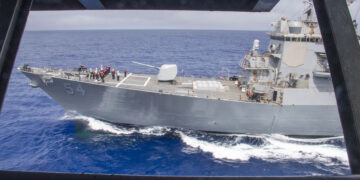
By John Mueller
April 10, 2025
Events on Ukraine-Russia
